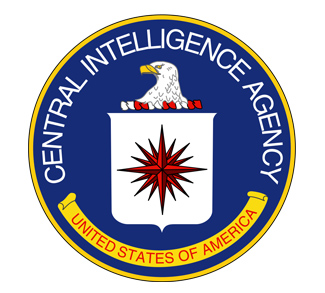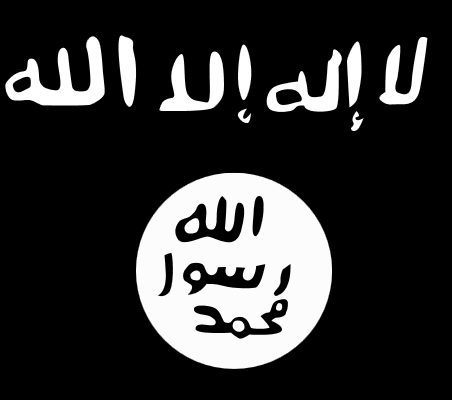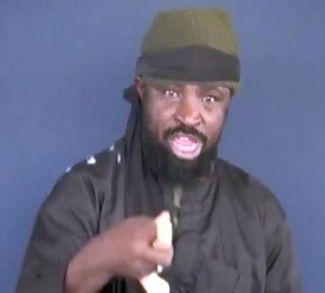Summary
Fueled by the Cold War and transnational corporate interests, the U.S. has covertly tinkered with the governments of Latin American countries since World War 2, producing an extremely violent and unstable political climate. This history gives context to the growing anti-Americanism in Latin America, most visibly illustrated in the open defiance of Venezuela’s Hugo Chavez and Bolivia’s Evo Morales to US policy. It also gives context to the recent trend in Latin America to elect left-wing governments.
Analysis
A Timeline of US Intervention in Latin America
Guatemala 1954: A CIA-organized coup overthrew the democratically elected and progressive government of Jacobo Arbenz. The U.S. justified its involvement by claiming that Soviets had an uncomfortable amount of influence over Guatemala, even though the two countries didn’t even maintain diplomatic relations. The real reason for U.S. involvement came from pressure from the United Fruit Company, whose land was expropriated by Arbenz’s progressive land reforms. The CIA action took a form that became the mold for CIA intervention in Latin America: The bribery of military officers and a propaganda campaign against the leftist government that included the resurrection of oppositional radio stations, the mass distribution of anti-government leaflets, and the anonymous submission of articles to newspapers painting the Arbenz government as communist. The U.S. also used international political clout to pressure the UN to ignore Arbenz’s request for an investigation of the incident. The coup was followed by a 40-year period of instability and brutality in Guatemala.
British Guiana (currently Guyana) 1953-64: CIA and British Intelligence funded anti-communist unions in order to strengthen opposition to democratically elected Dr. Cheddi Jagan. When this failed, the Churchill government simply removed him from office due to his socialist leanings. In 1957, Jagan was re-elected, and in response the U.S. Information Service launched an anti-communist (anti-Jagan) media campaign. Despite this, Jagan was re-elected again in 1961, which moved the British government to organize strikes in the unions that they had previously funded. The British government used these strikes as a sign of incompetence on the part of Jagan and changed the constitution to remove him from power.
Cuba 1959-present: After the Cuban revolution in 1959, the U.S. did everything in its power to prevent its government from succeeding. The U.S. performed air raids and even mobilized Cuban exiles to attack Cuba in the infamous CIA-orchestrated Bay of Pigs. The U.S. also enacted trade and credit embargos, sabotaged goods destined for Cuba, made multiple assassination attempts on Castro, his brother Raul, and Che Guevara.
Ecuador 1960-63: The CIA infiltrated the Ecuadorian government, set up news agencies and radio stations, bombed right-wing agencies and churches and blamed the left, all to force democratically elected Velasco Ibarra from office. When his replacement, Carlos Arosemara, refused to break relations with Cuba, the CIA-funded military took over the country, outlawed communism, and cancelled the 1964 elections.
Brazil 1961-64: After democratically elected Janio da Silva Quadros of the Brazilian Labor Party (PTB) resigned, citing military and U.S. pressure as the reasons, his successor, Joao Goulart, was overthrown by a U.S.-supported military coup in 1964. Critics argue that this is because Goulart promoted social and economic reforms, limited the profits of multinationals, nationalized a subsidiary of U.S.-owned International Telephone and Telegraph (ITT), and refused to break relations with Cuba and other socialist countries. He was replaced by two decades of a brutal military regime. There would not be another Labor Party president until the election of Lula da Silva in 2002.
Peru mid-1960’s: The CIA set up military training camps and provided arms to the Peruvian government to combat guerilla forces.
Dominican Republic 1963-65: In 1963, Juan Bosch took office as the first democratically elected president of the Dominican Republic since 1924. He was a true liberal and called for land reform, low-rent housing, modest nationalization of business, and restrictions on foreign investment. Seven months after being elected, the U.S. allowed a right wing military coup to take over the government. Nineteen months later, a popular revolution broke out which attempted to reinstate Bosch. The U.S. reacted by sending in troops to stop the Bosch revolutionaries. Meanwhile, the CIA and U.S. Information Agency (USIA) conducted an intensive propaganda campaign against Bosch. U.S. troops stayed in the Dominican Republic until September 1966, when, thanks in part to the anti-Bosch media campaign, Juan Bosch lost the election to Joaquin Balaguer.
Uruguay 1964-1970: The CIA and the Agency for International Development (AID) set up the Office of Public Safety (OPS) mission in Montevideo to train police in the art of torture in order to suppress rebel activity. The torture and killing was mainly directed at the Tupamaros, guerrillas who embarrassed public officials and exposed corporate corruption.
Now that Tabare Vasquez, Uruguay’s new left-leaning president, is in office, many who were once Tupamaro guerillas are now holding positions in government. This roster includes Agriculture minister Jose Pepe Mujica and Federal deputy Luis Rosadilla, who previously spent nine years in prison for his guerrilla activity.
Chile 1964-1973: After the CIA unsucessfully prevented Salvador Allende from winning the Chilean presidency by spreading propaganda and funding the opposition, it concentrated its efforts on getting Allende overthrown. The campaign, which involved bribing officers and spreading misinformation, was eventually successful and brutal dictator General Augusto Pinochet overthrew Allende in 1973. Allende died during the overthrow and seventeen years of repressive military rule followed.
The recently elected Chilean president, Michelle Bachelet, was herself imprisoned and tortured by Pinochet’s regime, as was her father, who died while in captivity. In her acceptance speech, Bachelet promised that to lead with tolerance, saying “because I was the victim of hatred, I have dedicated my life to reverse that hatred and turn it into understanding, tolerance and — why not say it — into love.”
Bolivia 1964-75: In 1952, an armed popular revolt defeated the military, displaced the oligarchy, nationalized the mines, instituted land reform, set up a new government, and reduced the military to an impotent force. Yet under the training (School of Americas) and financial support of the CIA and Pentagon, the military was built up again and overthrew President Victor Paz in 1964 because of his refusal to support Washington’s Cuba policies. (Note: this was nothing new for Bolivia, which has experienced the passing of governments more frequently than the passing of years.)
In January 2006, as Evo Morales was sworn in as Bolivia’s first indigenous president, he predicted a future of indigenous rule, saying, “We are here to say enough of the 500 years of Indian resistance. From 500 years of resistance, we pass to another 500 years in power.” Later that year, Morales sent Bolivian troops to occupy 56 gas installations and demanded all foreign energy-firms sign new contracts giving Bolivia majority ownership and as much as 82% of revenues, which they did.
Argentina 1970’s: While Argentina was receiving worldwide condemnation for their human rights abuses during the “Dirty War” against left-wing dissidents, U.S. Secretary of State Henry Kissinger was recorded giving the go-ahead to then-Argentine foreign minister Augusto Guzzetti. “We would like you to succeed,” said Kissinger of the civil war against the Argentine leftists. From 1975 to 1983, about 30,000 civilians accused of subversion either died or disappeared.
Nicaragua 1978-1990: When the Sandinistas overthrew the Somoza dictatorship in 1979, the U.S. was frightened by what they thought could be another Cuba. President Jimmy Carter tried to sabotage the revolution through economic and diplomatic forms, and later Reagan used violence. For eight years, Nicaragua faced military attacks by the U.S. funded Contras (Reagan’s “freedom fighters). In 1990, the U.S. interfered in national elections, and the Sandinistas were defeated. According to Oxfam, the international development organization, Nicaragua under the Sandinistas was “exceptional in the strength of that government’s commitment…to improving the condition of the people and encouraging [an] active development process.” Now, Nicaragua is one of the poorest nations in the hemisphere, with widespread illiteracy and malnutrition.
Honduras 1980’s: Honduras was basically a colony of the U.S. during the Contra war in Nicaragua. Thousands of U.S. troops were housed there and it was used as a supply center and refuge for the Contras. The U.S. funded the Contras by covertly and illegally selling arms to Iran (known as the Iran-Contra Affair).
Grenada 1979-1983: A 1979 coup took control of this small island country and attempted to install socialist reforms. The Reagan administration used destabilization tactics and eventually invaded in 1983, resulting in U.S. as well as Grenadian and Cuban casualties.
El Salvador 1980-92: After the U.S. helped fix an election to repress dissidents in El Salvador, the rebels turned to violence and a civil war ensued. Although the U.S. claimed to be only involved on an advisory basis 20 U.S. soldiers were killed in combat missions. The U.S. spent six billion dollars repressing this popular revolution.
Haiti 1987-94: After supporting the Duvalier family dictatorship for 30 years and opposing Jean-Bertrand Aristide, the U.S. claimed to support the elections that returned Aristide to power after he was ousted by a 1991 military coup. Meanwhile, they warned Aristide that they would only allow him to rule if he implemented free market policies. Aristide did not remain in power for long, however, and in a subsequent interview he attributed his removal from power to his refusal to privatize Haiti’s state-owned enterprises.
The 2004 coup was orchestrated by the leaders of the FRAPH, or Haitian Front for Advancement and Progress, a CIA-backed organization that carried out state terror against opponents of the military regime that ruled the country from 1991 to 1994. Another leader in the armed coup against Aristide was Guy Philippe, a former member of the Haitian military who received training from US Special Forces in Ecuador in the 1990s. After these forces pushed Aristide into exile, the U.S. stepped in to restore stability in Haiti, now under new rule. Since Aristide’s removal from power, his supporters have been targeted by the UN forces now tasked with “peace keeping,” killing many innocents from Haiti’s poorest neighborhoods in the process.
Panama 1989: Just weeks after the fall of the Berlin Wall, the U.S. invaded Panama, killing thousands and leaving many more wounded and homeless in order to capture Manuel Noriega, a previous ally of the U.S.
Mexico, Peru, and Colombia 1990’s to present: Under the guise of the drug war, the U.S. has given military aid to these countries despite their poor human rights records. This aid is used to fight rebel forces.
Venezuela: Recent U.S. intervention in Venezuela manifests itself as millions of dollars in contributions to political opponents of leftist President Hugo Chavez. The short-lived 2002 coup d’etat that kidnapped the democratically elected president was orchestrated by groups who had received funding from the U.S. National Endowment for Democracy (NED). When the opposition took power, they dissolved all of Venezuela’s democratic institutions, including the National Assembly, the Supreme Court, the Constitution, the General Attorney, and the Public Defender’s office. Meanwhile, their plan promised a return to free market economic policies. The coup only lasted two days before a popular resistance reinstated Chavez.
* Brazil, Venezuela, Bolivia, Argentina, Uruguay, and Chile have all elected left governments within the last 5 years.
Sakura Saunders is a contributor to Geopoliticalmonitor.com
Sources:
[1] Blum, William. Rogue State: A Guide to the Worlds Only Superpower. Common Courage Press, 2005.
[2] Blum, William. Killing Hope: US and CIA Interventions Since World War II. Common Courage Press, 2003.
[3] Blum’s writings have been updated in this article with news from various sources.



